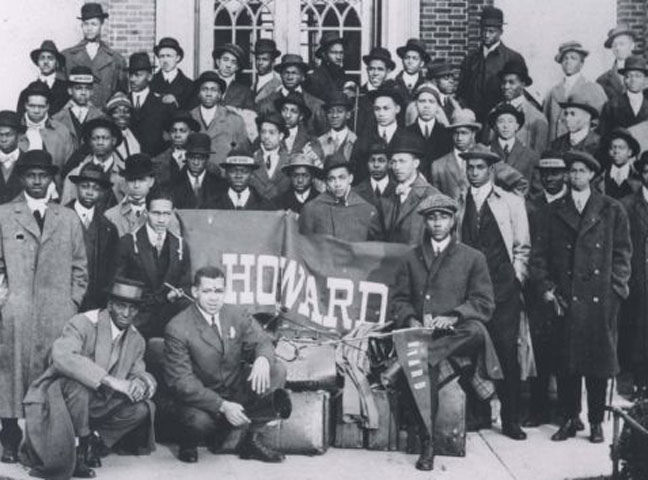In 1799, Washington and Lee University admitted John Chavis who is noted as the first African American on record to attend college. However, the first African American to have earned a bachelor’s degree from an American university, Alexander Lucius Twilight, graduated from Middlebury College in 1823. Three decades later, Mary Jane Patterson was the first African American woman to earn a bachelor’s degree, graduating from the Abolitionist-centered Oberlin College in 1862. These individuals were singular in accessing higher education.
Richard Humphreys established the African Institute (now Cheyney University) in 1837 in Pennsylvania, making it the oldest HBCU in the United States. Its mission was to teach free African Americans skills for gainful employment. Students were taught reading, writing and basic math alongside religion and industrial arts. During the 1850s, three more HBCUs were founded: Miner Normal School (1851) in Washington, D.C.; Lincoln University (1854) in Pennsylvania; and Wilberforce (1856) in Ohio. The African Methodist Episcopal Church established Wilberforce University, the first HBCU operated by African Americans. The provision of education for people of African descent in early America was recognized by some as unnecessary and criminal, while others saw it as essential and vital.
The majority of HBCUs originated from 1865-1900, with the greatest number of HBCUs started in 1867, two years after the Emancipation Proclamation: Alabama State University, Barber-Scotia College, Fayetteville State University, Howard University, Johnson C. Smith University, Morehouse College, Morgan State University, Saint Augustine’s University and Talladega College. Over a century later, HBCUs were still being established with J.F. Drake State Technical College (1961), University of the Virgin Islands (1962), Southern University at Shreveport (1967) and Morehouse School of Medicine (1975). Technically, HBCUs are those IHEs established prior to 1964, to educate persons of African descent. Those founded after 1964 are known as predominantly Black institutions (PBIs), but are included in this study as part of the 101 HBCUs. The technical definition of a PBI, as established in the Higher Education Act of 2008, includes the following criteria: at least 40% African-American students, minimum of 1,000 undergraduates, have at least 50% low-income or first-generation degree seeking undergraduate students, and have a low per full-time undergraduate student expenditure in comparison with other institutions offering similar instruction. These qualifications reflect conditions in which HBCUs operate, and indicate that since their founding, HBCUs have continued to serve their core constituencies: students who are of African descent, and/or first-generation, and/or low-income.
Approximately 89% of all HBCUs are in the southern region of the United States, although they can be found in Delaware, Illinois, Maryland, New York, Ohio, Pennsylvania, and West Virginia. North Carolina hosts eleven HBCUs, Louisiana has seven and Alabama has twelve. While many consider HBCUs to be a homogeneous group, there are levels of diversity within this unique classification of institutions, not only by academic distinction and socioeconomic status but also in student demographics. In addition, HBCUs have diverse classifications: public, private, denominational, liberal arts, land-grant, independent university systems, single-gender serving, research-based, large and small, with enrollment numbers that can range from less than 300 to over 11,000 students.
The U.S. Department of Education lists 4,298 degree granting post-secondary institutions in the United States. According to the National Center for Education Statistics (NCES), there were a total of 1,626 public colleges, 1,687 private nonprofit colleges and 985 for-profit colleges in Fall 2017. HBCUs represent 2.3% of this total, with 101 institutions. The only other ethnic-specific minority serving institutions, Native American/tribal institutions, of which NCES lists 17, represent .395% of the post-secondary institutions in the U.S. HBCUs established in the late 1800s originally provided limited education and training options for students of African descent, either free-born or emancipated slaves. Many focused on teaching, theology, and industrial arts to provide an educational foundation to support economic independence and self-sustainability. Since that time, HBCUs have developed programs, majors, course offerings that now shape how HBCUs are defined. Most of these institutions (59%) offer only undergraduate degrees and 41% offers graduate degrees, with 28% awarding doctoral degrees.
It is important to mention that HBCUs have also survived historical challenges: Jim Crow, inadequate funding, deferred maintenance and accreditation issues. In addition to these endemic issues, new circumstances threaten the persistence of these institutions. The relevancy of the HBCU has become an argument in political, social and academic arenas. Many believe that the HBCU is a prehistoric bastion of the era of segregation. Others argue that the HBCU is a vital part of still educating the underserved. These arguments reflect two educational philosophies that date back to the 19th century, articulated by Booker T. Washington and W.E.B. DuBois. Washington, born into slavery in Virginia, advocated for educating former slaves in industrial and agricultural skills, as well as in teaching. While he attended Hampton Institute himself, where he studied industrial education. He founded the Tuskegee Normal and Agricultural Institute in rural Alabama, to educate former slaves in practical skills with which they could earn a living. DuBois, born free in Massachusetts, attended Fisk Institute and earned a Ph.D. from Harvard University. DuBois believed that 10% of Blacks could be educated at elite institutions, as he had been, to lead the African-American community. While these two philosophies are not mutually exclusive, they continue to undergird today’s higher educational patterns between African-American students who focus on primarily white institutions (PWIs), or those who attend HBCUs. Nevertheless, as highlighted below, HBCUs’ record is to train African-American community leadersopens in a new window. Indeed, in his 2012 Ford Foundation White Paper, Former MIT Provost Prof. Phillip L. Clay revealed that HBCU students are the next generation of community leaders, stating that HBCU students “place a higher value on community service, community leadership and civic and political engagement” than did their peers in non-HBCU institutions.

